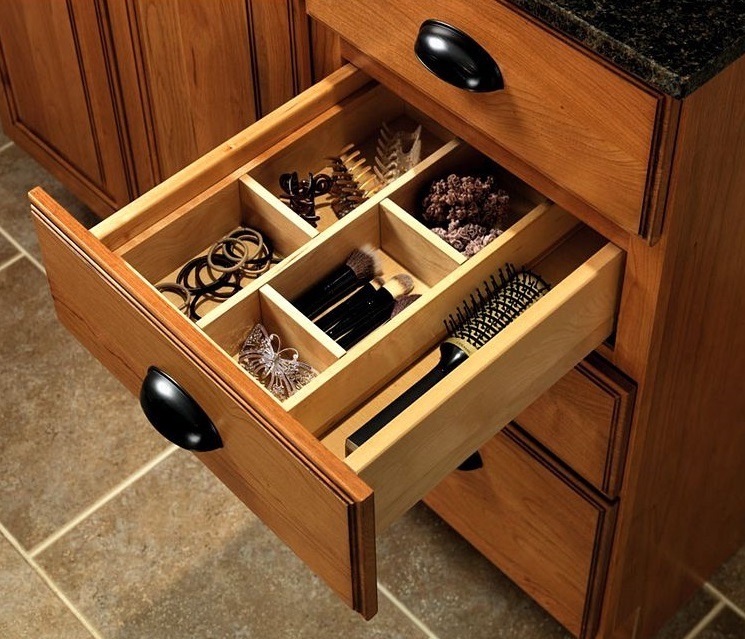Can geraniums survive outside in winter
GERANIUMS CAN SURVIVE THE WINTER, IF THEY RECEIVE APPROPRIATE CARE
Gardeners frequently have trouble overwintering geraniums. Following instructions explicitly, they knock the plants out of their pots in fall, brush off the dirt and hang them, bareroot and upside down, in the basement to spend the winter in a state of suspended animation.
Then they wonder why every one of them dies.What the instructions fail to mention is that the rules have changed. The hand-and-dry method worked fine when homes had root cellars. But when cellars were replaced with dry, centrally heated basements, no one bothered to consult the geraniums.
And they're having none of it.
Gardeners fortunate enough to have root cellars can still use the old-fashioned method to overwinter their geraniums. The rest of us will have to find another way to coax buds from these popular annual flowers. Or buy new plants next spring.
If space next to a sunny, south-facing window is plentiful, try carrying geraniums over as houseplants.
Check carefully for insects and diseases before bringing them indoors. The winter will be a struggle for them as it is, and no one needs aphids or botrytis blight attacking other houseplants.
Trim plants gently to reduce tops by about a third. Move the pots to the windowsill before the first killing frost.
Water and feed geraniums sparingly throughout the winter months. Foliage will turn pale green or yellow, and many leaves will fall off, leaving the plants looking pretty shabby by winter's end.
But if they're alive in early spring, new buds will appear as days grow longer and brighter. Prune back to healthy shoots near the base of each plant. Begin fertilizing regularly. Set the pots outside in a protected place for two weeks to give the geraniums a chance to adjust to conditions outdoors before planting them in the garden.
Some folks prefer to overwinter their geraniums as rooted cuttings. It takes less space; those with grow lights can save many more plants.
Some gardeners believe that geraniums started from cuttings each fall turn into healthier, more vigorous plants the next season.
In early autumn, take 3- to 4-inch cuttings from non-flowering stems. Strip off the bottom leaves and dip the ends of the cuttings in rooting powder.
Press the cuttings into damp perlite or vermiculite, place them in a flat and cover the whole thing with clear plastic wrap to conserve moisture. (Geranium cuttings rot easily in a soggy potting soil, so stick with perlite or vermiculite instead of a peat-based soilless mix.)
Cuttings will root in three to four weeks. When they have, move each rooted cutting into a 3-inch pot filled with soilless medium. Place the plants close to the light source, watering them only when the soil dries out.
To keep plants short and bushy, pinch off about two inches of growth when the cuttings reach a height of six inches. Continue to grow the cuttings as houseplants until it's warm enough to put them out in spring.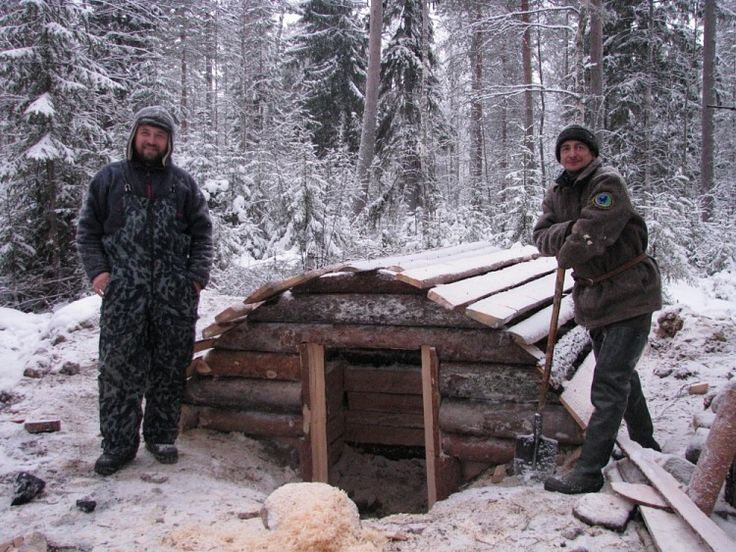
How to overwinter geraniums: with expert advice
(Image credit: Getty Images / yonka60 )
Learning how to overwinter geraniums is really handy for a gardener to know as it can save money and allows you to prolong the life of varieties you are particularly fond of.
Geraniums, or pelargoniums, are stalwarts of the summer garden. Available in an array of colors, and flowering continuously provided they are deadheaded, geraniums are perfect for bringing cheer and long-lasting color to hanging baskets, containers and borders.
However, they should be one of the winter garden ideas you have in mind when compiling your job list.
(Image credit: Hervé Lenain / Alamy Stock Photo )
Planning a winter garden is vitally important when it comes to frost-sensitive plants. While they put on a long display and are perennial plants, geraniums are frost tender, meaning that they will not survive harsh winters – so knowing how to overwinter geraniums is a must if you are keen on growing them.
Originating from South Africa, geraniums are happiest in the heat, and can tolerate periods drought with little water.
Geraniums, or pelargoniums, are hardy in USDA zones 9-12 in climates of between 20ºF to 50ºF and can survive to zone 7 to temperatures of -12ºF (0ºC) if protected. While they can survive light frosts (temperatures just below freezing), they will die if exposed to prolonged temperatures below freezing so need to be protected in these conditions.
‘The Pelargonium group is very diverse and has many growing forms all of which are classed as tender perennials. This means that they are not frost hardy as the majority of the originating species come from the warmer climbs of the Southern Hemisphere,’ says David Taylor, Vice Chairman of the UK Pelargonium and Geranium Society.
‘Being perennial means that they can continue to grow for a number of years but in the UK this would mean that they would need to be protected from, not only frost, but also winter wet and damp.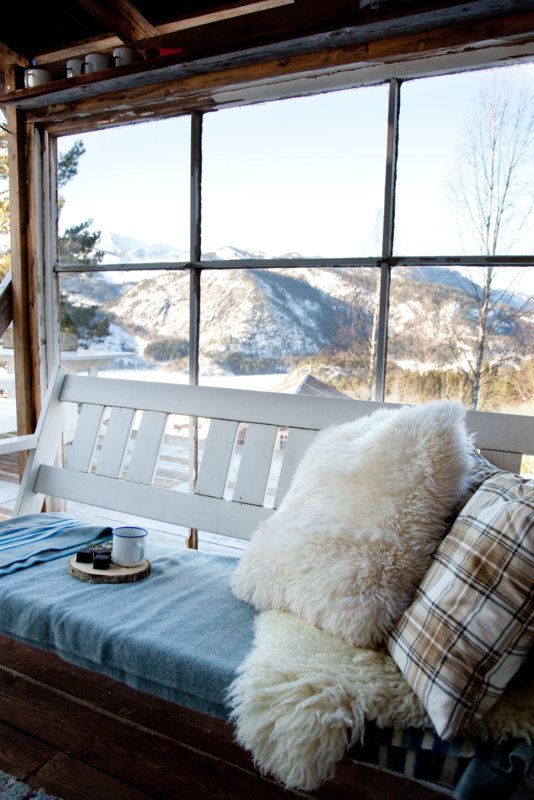 ’
’
(Image credit: Getty Images / Jackie Parker Photography)
You can treat geraniums like annuals, digging up the plants in fall and composting them and replacing them with new plants the following year. However, given the right care and treatment, you can winterize geraniums, keeping them alive over winter ready to flourish again the following year.
‘Keen enthusiasts keep their pelargoniums in growth during the winter and continue to feed and water but a few key points can be undertaken by anyone to keep your pelargoniums (geraniums) alive throughout the winter,’ explains David Taylor, Vice Chairman of the UK Pelargonium and Geranium Society .
Geraniums are the common name for pelargoniums and should not be confused with hardy geraniums or cranesbill which are a different type of plant and do not require overwintering.
How to overwinter geraniums
There are different ways to overwinter geraniums. Potted and kept in the right conditions, the plants can be kept either growing or in a semi-dormant state over the winter, however they can also be overwintered in a dormant state and stored in bare-root form. Below we outline the two separate methods with help from the experts. Another alternative is to take cuttings from your geraniums to create new plants for the following year.
Below we outline the two separate methods with help from the experts. Another alternative is to take cuttings from your geraniums to create new plants for the following year.
(Image credit: Getty Imahges / yonka60 )
How to overwinter geraniums in pots
Often geraniums are grown in containers, and this is a great way to grow them if you are looking to overwinter them.
Move pots under cover
If your geraniums are already in pots, in fall, before the frost arrives, these pots can simply be moved under cover into a light, airy and frost-free place such as a greenhouse or conservatory.
‘The best place would be a greenhouse and the ideal environment would be to have a heater in place to maintain temperatures above freezing when frost does threaten,’ says David Taylor, Vice Chairman of the UK Pelargonium and Geranium Society. (PAGS).
If your geraniums have been grown in a border, you can dig these up, repot them and bring these pots undercover, too.
Cut plants back
Whether they are already potted or have been taken from the border and repotted, it is best to cut geraniums back before bringing them inside, as David Taylor of PAGS explains.
‘Firstly you should cut your plants back by about two thirds; if lifting from outdoor beds they may need to be cut down by three quarters or even more and only do this cutting when the roots are dry otherwise the remaining stems will die back.’
‘Also, remove any dead, damaged, and unhealthy areas you see. Make sure they are free from bugs, and then bring them in for the winter,’ adds Emily Fernandes, a small space gardener from California and a consultant at HouseGrail .
Reduce watering
Whilst under cover the geraniums are best kept in a semi-dormant state and so will not require feeding and will need less watering. ‘Put them in an area that gets partial sun and water them every 2-3 weeks, keeping them at around 50% humidity. Like most other plants, they go dormant through the winter to preserve their energy for the growing season,’ adds Emily Fernandes, consultant at HouseGrail .
Like most other plants, they go dormant through the winter to preserve their energy for the growing season,’ adds Emily Fernandes, consultant at HouseGrail .
(Image credit: James Allan - Alamy Stock Photo)
Can I overwinter geraniums in an unheated greenhouse?
Whilst a heated greenhouse is preferable, ideally set to a minimum of 46ºF (8ºC), you can overwinter potted geraniums in an unheated greenhouse, if doing this, ‘keep it well insulated with bubble wrap or the like and cover plants with fleece when very cold weather threatens,’ advises David Taylor of thepags.org .
If you don’t have a greenhouse that geraniums can be kept in a conservatory, ‘but the preference would be one that is unheated as if it is too warm you may get a lot of lanky growth due to the low light levels in the winter,’ adds David.
If you do not have a greenhouse or conservatory smaller pots can be bought inside the house and placed on a sunny windowsill.
If you have potted geraniums too large to be brought inside you can consider leaving them outside says David Taylor.
'If you have really large potted pelargoniums outside and have a south facing wall you can chance putting the pots up against this for the winter. However, in this case, you should not cut the plants back as the growth will offer some protection to the roots during periods of very cold weather,' he explains. 'Should we have a very cold winter it is unlikely that plants in this position would survive.'
(Image credit: Future)
How to overwinterize geraniums in bare-root form
Geraniums can also be overwintered in bare-root form (with no soil around the roots) and stored in a dormant state ready for repotting in spring. This method will take up less space in comparison to overwintering geraniums in pots and is the best way to store large numbers of geraniums. This method does not require a greenhouse, they can be stored in a shed or garage.
Dig them up If using this method, before fall, dig them up and shake off all the soil from the roots and let them dry out for a couple of days.
Cut back At this stage cut back the stems to around 4 inches (10cm), trim the roots to about 5cm and remove any leaves.
Store The nest step is to ‘place them in a cool dry area in paper bags or cardboard boxes. We cover our plants with seasoned sawdust,’ explains is to Tammy Sons, CEO at Tn Nursery near Nashville Tennessee. You can also wrap them in newspaper or cover them with potting compost.
Pot up In early spring the bare-root plants that show signs of growth can then be potted up, but it’s recommended to soak the root for a few hours before doing so.
Cut back Once potted up, the plant should be cut back. ‘It’s necessary to cut back your geranium plants when you unpack them in the spring,’ advises Bryan Mackenzie, landscape designer and co-founder of bumpercroptimes.com . ‘You have to cut all the stems back to healthy-looking green growth. It’s also a good idea to trim off all the roots that are significantly longer than the others,’ he adds. This is different to deadheading geraniums in summer to promote more blooms.
This is different to deadheading geraniums in summer to promote more blooms.
Harden off The pots can then be placed in a sunny, frost-free spot to kick start growth and gradually hardened off after the risk of frost has passed before being finally brought outside into the garden ready for its summer display.
(Image credit: Clare Gainey - Alamy Stock)
When should you overwinter geraniums
Geraniums are tender perennials so will need protection from hard frosts by being brought under cover, it is important that this is done in fall before the winter frosts set in.
What is the best way to overwinter geraniums?
The best way to overwinter geraniums will depend on how many plants you want to overwinter and the overwintering space you have available. Generally it is easiest to keep them in pots and to move them into a light, airy and fros- free space such as a greenhouse or conservatory. However, if you want to overwinter lots of geraniums it may be better to store them in bar- root form within paper bags and kept in a cool, dry place.
Pippa is Content Editor on Homes & Gardens online contributing to Period Living and Country Homes & Interiors print issues. A graduate of Art History and formerly Style Editor at Period Living, she is passionate about architecture, creating decorating content, interior styling and writing about craft and historic homes. She enjoys searching out beautiful images and the latest trends to share with the Homes & Gardens audience. A keen gardener, when she’s not writing you’ll find her growing flowers on her village allotment for styling projects.
Rules for wintering pelargonium on the windowsill and in the basement, refrigerator. Care. Photo - Botanichka
Pelargonium often spends the summer outside, decorating terraces or balconies. Fresh air is good for flowers, and in the summer it blooms unusually profusely, building up lush branched bushes. But now the heat is coming to an end, and you have to clean the plants for the winter in a warm room.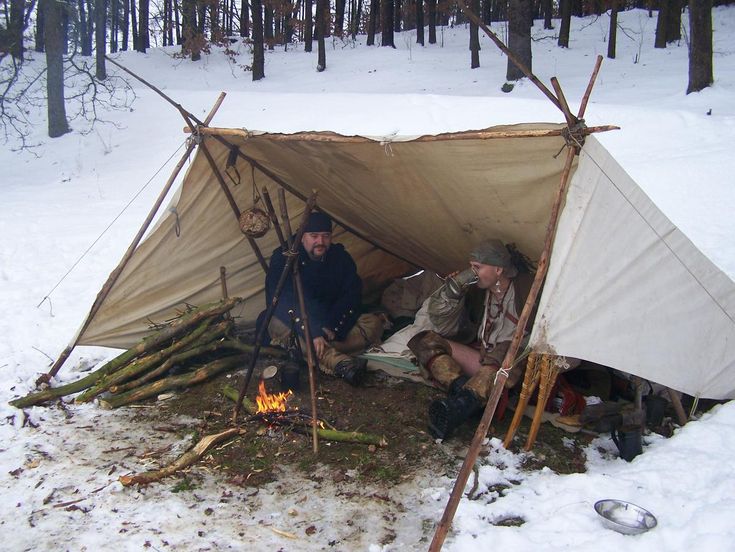 Many flower growers notice that pelargoniums are usually not happy with such a move and begin to actively turn yellow, shedding foliage. This feature of indoor geraniums causes a lot of trouble, because a lot of debris appears on the windowsill from fallen leaves, and the suffering flower itself no longer looks so attractive. But is it possible to minimize stress when returning pelargonium to the apartment and provide the flower with an ideal wintering? Let's try to understand this article. nine0003 Rules for wintering pelargonium on the windowsill and basement
Many flower growers notice that pelargoniums are usually not happy with such a move and begin to actively turn yellow, shedding foliage. This feature of indoor geraniums causes a lot of trouble, because a lot of debris appears on the windowsill from fallen leaves, and the suffering flower itself no longer looks so attractive. But is it possible to minimize stress when returning pelargonium to the apartment and provide the flower with an ideal wintering? Let's try to understand this article. nine0003 Rules for wintering pelargonium on the windowsill and basement
Most flower growers stubbornly call pelargonium geranium, although pelargonium and geranium are different plants. But since for most the name "geranium" is more familiar, in the article we will use it on a par with "pelargonium".
When should Pelargonium be brought indoors?
To begin with, let us recall that indoor geraniums are divided into several independent types: zonal, ivy (ampelous) geraniums, Angels, royal and fragrant pelargoniums. nine0003
nine0003
The situation is easiest with the wintering of fragrant pelargonium and traditional zonal pelargonium (“kalachiki”). With constant cultivation in an apartment, old "grandmother's" varieties require a minimum amount of attention, but with a sharp change in conditions, even they can react negatively, not to mention modern hybrids.
As you know, the older the plant, the harder it tolerates changes in environmental conditions, so many flower growers prefer not to mess with overexposure of mother liquors, but decide to renew flowers from cuttings every year so that small young plants leave for wintering. nine0003
To do this, it is necessary to cut cuttings from pelargoniums without waiting for autumn - in mid-late August, and initially grow young growth as indoor flowers. Then the onset of winter will not cause much stress in the geraniums.
But not every flower lover raises his hand to throw away a chic voluminous bush. In addition, it is noticed that in the second year the plants give a particularly lush flowering. Moreover, in modern dwarf and mini-cultivars, bushes develop very slowly and this method is unacceptable for them. nine0003
Moreover, in modern dwarf and mini-cultivars, bushes develop very slowly and this method is unacceptable for them. nine0003
Pelargoniums are able to tolerate a slight temperature drop for a short time. But if you are determined to move the geraniums to an apartment for the winter, then it is better not to bring them to significant cold weather. The later the plants get into the room, the longer the period of adaptation to the changed conditions will last.
For the most painless adaptation, it is better to plan the move (on average) at the end of August-beginning of September. It is also possible to determine that the outdoor temperature is no longer comfortable for plants by signs such as significant reddening or yellowing of foliage and peduncles. nine0003
Read more about the types and varieties of pelargoniums in the material Pelargonium is the most hardy of the flowering plants.
How to help Pelargonium adapt on the windowsill?
When placing geraniums on the windowsill, make sure that the leaves are turned to the light on the same side from which they were most illuminated on the street. To remove fungal spores and pest eggs that may remain on the flower, it is recommended to thoroughly wash the stems and leaves with Green Soap. nine0003
To remove fungal spores and pest eggs that may remain on the flower, it is recommended to thoroughly wash the stems and leaves with Green Soap. nine0003
It is also possible to help plants to endure adaptation using treatment with anti-stress preparations (Epin, Zircon, Stimulus, HB-101, succinic acid).
Even if the pots in which they lived outside have become too small for flowers, it is better to postpone transplanting until the end of winter so as not to create additional stress factors.
Should Pelargoniums be pruned?
The need for autumn pruning of geraniums before wintering is a debatable issue. As a result of pruning, any plant inevitably loses its strength, but if the overgrown bushes literally do not fit on the windowsill or shelving, then the grower has no choice. nine0003
It is a well-known fact that pruning stimulates the awakening of sleeping buds, so if there is a need to trim a geranium, it is best to do this a couple of weeks before its planned move. In this case, in the presence of warm and sunny weather, pelargonium will grow healthy, abundant shoots. But if you transfer this procedure to autumn, then indoors with a lack of light, the young growth will be elongated and weak. This rule does not apply to the removal of flower stalks, which must be cut off so that the plant does not waste energy on flowering. nine0003
In this case, in the presence of warm and sunny weather, pelargonium will grow healthy, abundant shoots. But if you transfer this procedure to autumn, then indoors with a lack of light, the young growth will be elongated and weak. This rule does not apply to the removal of flower stalks, which must be cut off so that the plant does not waste energy on flowering. nine0003
In the case when you send geranium grown in a flower bed for wintering, you need to do this without waiting for night temperatures to fall to +12 ... +15 degrees. This is due to the fact that in autumn it often rains regularly, and the presence of plants in wet soil can lead to rotting of the roots. The root system of pelargoniums is small, and even in powerful bushes growing in open ground, it does not grow too much.
It is better to choose a pot for wintering such pelargoniums no more than 15 centimeters in diameter. After transplanting, the flowers will take time - from two weeks to a month - to get used to the pots and new conditions, and prepare for a dormant period. During this period, it is better not to disturb the plants with pruning and top dressing, keep them in the shade in the open air. For some time, the leaves will inevitably turn yellow and fall off, and as soon as the dormant buds begin to wake up, you can bring them into the house to the south window. nine0003
During this period, it is better not to disturb the plants with pruning and top dressing, keep them in the shade in the open air. For some time, the leaves will inevitably turn yellow and fall off, and as soon as the dormant buds begin to wake up, you can bring them into the house to the south window. nine0003
Note: even in the best scenario, when living conditions change, part of the geranium leaves will turn yellow and fall off. It is better not to interfere with this natural process “in the name of beauty”, and do not remove the leaf that begins to turn yellow, but wait until the leaf blade dries out completely.
Pelargonium stalk managed to grow and bloom before wintering. © Lyudmila SvetlitskayaBasic rules for wintering pelargonium
In order for pelargoniums to winter safely, it is necessary to help them decide on a course of action for the coming months. nine0047 Pelargonium zonal is not a winter sleep-demanding flower, but these plants behave differently depending on external conditions. Therefore, wintering can become a period of complete rest for pelargoniums or a time when they will gradually continue the growing season.
Therefore, wintering can become a period of complete rest for pelargoniums or a time when they will gradually continue the growing season.
The signal for this or that behavioral strategy for plants is the average temperature level and the degree of illumination. But in the conditions of a city apartment in winter, both factors, as a rule, are in an imbalance, because in nature, with the onset of cold weather, daylight hours usually decrease, and vice versa. But on the windowsills during this period it is usually excessively warm, but there is not enough sunlight for full growth. nine0003
Therefore, in order for pelargonium to rest a little in winter, the temperature in the room must be maintained at +10 ... +15 degrees. At the same time, when airing, make sure that the plants are away from cold drafts.
And if you provide flowers with illumination for 12 hours a day, the temperature can be even higher than 20 degrees. Indoor geranium does not belong to plants of a short or long day, therefore, under such conditions, it can even please with flowering. Bushes grow moderately and do not stretch. For further propagation, the first cuttings can be removed in early January. As a rule, cuttings work best at this time. nine0003
Bushes grow moderately and do not stretch. For further propagation, the first cuttings can be removed in early January. As a rule, cuttings work best at this time. nine0003
Features of the wintering of Pelargonium "Angel"
If most varieties of zonal Pelargonium can somehow survive the winter on the windowsill without creating special conditions, then for Pelargonium "Angel" this is hardly possible. For this species, proper wintering not only ensures the laying of buds for the subsequent flowering of bushes, but is also a guarantee of plant survival during this difficult period.
It is very important not to be late with the beginning of the dormant period of the "Angels", because the later it starts, the further the flowering period will move. On average, the winter sleep of these flowers should last from October to February. At this time, the temperature regime is maintained in the range not lower than +9and not higher than +15 degrees. It is also desirable to use the backlight at the rate of 14-hour daylight hours.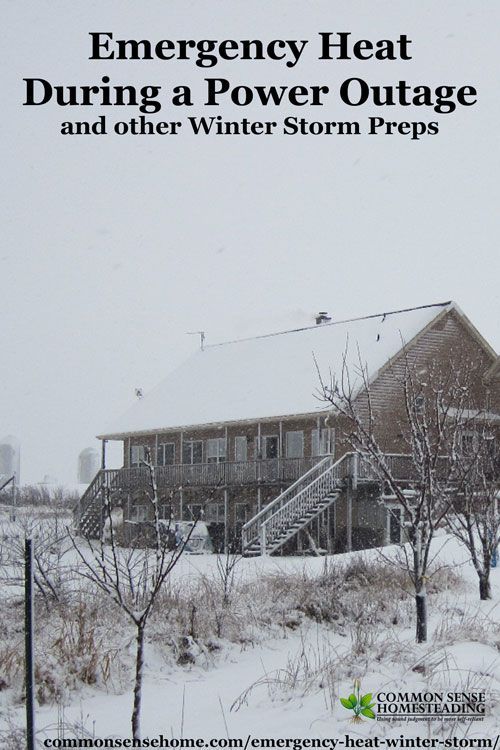
But, as practice shows, low temperature prevents stretching, and if the temperature regime is observed, plants have enough natural light on bright windows.
Details of wintering of royal pelargoniums
For royal pelargoniums, the winter temperature should be even lower - from +8 to +10 degrees. At such a reduced temperature, watering should be extremely careful - rare and very moderate (depending on the size of the pot, it is 50-100 ml, once every 3 weeks). Otherwise, wintering flowers may be affected by fungal diseases. nine0003
The insidiousness of such a defeat lies in the fact that the signs of the disease do not appear immediately. And when the symptoms become visible, the disease is already in its heyday and can even lead to the death of plants. Therefore, it is very important to inspect the leaves and stems for plaque or discoloration.
It is also recommended to carry out preventive treatments with antifungal drugs before wintering the royal geraniums. This should be done a few days before their move, so that the treated plants have time to dry well and do not fall under the draft and exposure to cool temperatures. nine0003
This should be done a few days before their move, so that the treated plants have time to dry well and do not fall under the draft and exposure to cool temperatures. nine0003
It is also useful to pinch the bush a little before retiring, but radical pruning can be fatal. The first feeding is carried out in late February-early March, by this time the bushes are building up side shoots, which soon begin to bloom. The optimal daylight hours for royal geraniums should be 14 hours, so it is advisable to organize a backlight for these flowers.
With good lighting and suitable temperatures, Pelargonium can bloom in winter. © Ludmila SvetlitskayaFeatures of wintering Pelargonium ivy
Unlike zonal pelargonium, ivy geranium is most often pruned before its placement in a winter apartment. According to experienced flower growers, for standard varieties after pruning, the length of the lashes should be 10-15 cm, and for dwarf ones - a little less - 5-10 cm. All dry and diseased parts of the plant are removed at the same time.
From November to February, it is desirable to provide flowers with a temperature not higher than 18 degrees and very rare watering. Some varieties winter well on southern window sills in ordinary city apartments at a higher temperature, but during this time they weaken and stretch a lot. nine0003
Watering and feeding Pelargonium in winter
Of course, Pelargonium is far from cacti, but due to the ability to accumulate moisture in a thickened stem, this flower belongs to semi-succulent. It follows from this that pelargonium is much more terrible to transfuse, and high humidity at low temperatures is especially critical.
When you see that the geranium is ready to rest (it stops blooming, old leaves turn yellow more often, and young foliage practically does not develop), watering should be reduced. When watering, do not moisten the soil too much (no more than 100 ml per medium pot). Such maintenance watering is carried out approximately once every two weeks. Young bushes are watered a little more often. nine0003
Young bushes are watered a little more often. nine0003
Water along the edge of the container, away from the root collar. It is better to water pelargoniums in the morning, no later than 11 o'clock.
If your flowers overwinter with illumination at a high temperature, then watering is carried out as usual - plentifully, but only after the surface of the soil dries out by 2-2.5 centimeters. Next time, water only when the substrate is almost completely dry.
Because Pelargonium has slightly hairy foliage, foliar feeding is not recommended for this plant at any time of the year. And you can feed the bushes in the winter only if they get enough light and bloom profusely. nine0003
In the rest mode, top dressing is completely stopped and resumed only from the end of January, when active vegetation begins. To do this, it is better to use a ready-made complex fertilizer for flowering plants.
Possible problems when wintering pelargonium indoors
Even after successful adaptation to the conditions of the apartment, yellowing and drying of the leaves may be observed in geraniums.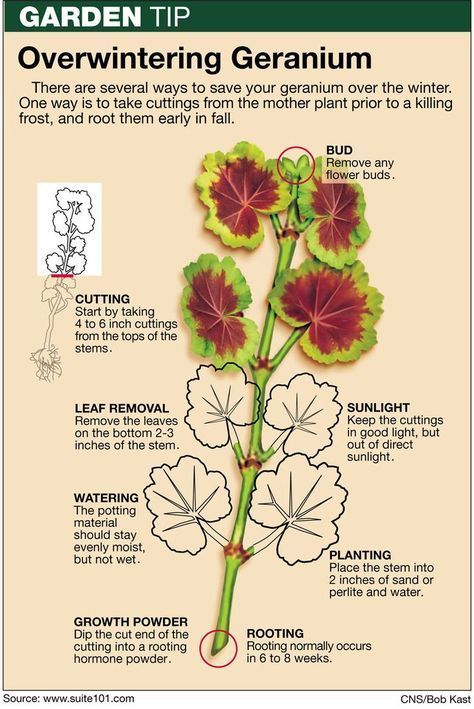 There can be many reasons for this. In particular, leaf fall provokes a lack of light, dry air, or excessive or insufficient watering. nine0003
There can be many reasons for this. In particular, leaf fall provokes a lack of light, dry air, or excessive or insufficient watering. nine0003
In winter, pelargoniums are usually weakened and can be easily attacked by pests. Most of all indoor geraniums are annoyed by whiteflies, spider mites and mealybugs. Of the most common diseases of pelargonium, fungal diseases should be noted. Most often, pelargoniums are affected by the black leg. The disease is easily identified by the characteristic decay of the stem near the root collar.
If this happens, then the treatment usually does not work, and the only way to save the variety is to establish healthy tops. Moreover, the cuttings must be cut, retreating as high as possible from the affected area. nine0003
In case of botrys disease, geraniums are covered with characteristic fluffy gray spots similar to mold. If the fungus has struck the root system, then this is manifested by yellowing of part of the leaf blades. In the future, the yellow areas turn brown or blacken, and the bush is covered with a cobweb-like coating. In most cases, timely treatment with antifungal drugs gives a positive result.
In most cases, timely treatment with antifungal drugs gives a positive result.
Alternative overwintering of pelargonium
The physiology of pelargonium allows plants to hibernate for several months, which makes it possible, if there is not enough space on the windowsill, to organize wintering for flowers in the basement or vegetable section of the refrigerator.
At a temperature of +4 degrees, which is maintained in a refrigerator, a cold basement or a glazed balcony, pelargonium can be without light. Therefore, these places are quite suitable for organizing alternative wintering.
In preparation for the dormant period, all plants undergo radical pruning to the state of stumps (3-4 buds), and in species of plants with a large root system, the roots are also partially pruned. In the final state, the root group of geraniums should not exceed the size of an apple of medium size.
Then the prepared specimens are kept in this state (without bowls) for several days so that the soil dries. After that, the whole plant “with its head” is wrapped in several layers of newspaper and, in this form, is placed in a Tetra Pak-type juice or milk package. For greater tightness, the package is wrapped with cling film on top. nine0003
It is advisable to check overwintering plants about once a week and, if necessary, replace newspapers with new ones if they become excessively wet. In the case when wintering is successful, after planting in the ground, the plants quickly start to grow and gain green mass before our eyes.
However, as practice shows, this method does not guarantee 100% survival. With minimal losses, zonal and fragrant geraniums emerge from such a dormant period, but among the ivy, Angels and royal geraniums, the largest losses are observed. nine0003
Can geraniums be left in the ground for the winter in a flower bed or should they be dug up and brought into the house | Geranium
If it is an indoor geranium, then it must be moved into the house for the winter. She loves a cold winter, but will not tolerate frost.
She loves a cold winter, but will not tolerate frost.
Garden geraniums, perennials, wintering in the garden are gaining more and more popularity.
e.g. It was introduced into culture in the 17th century. nine0003
Perennial plant. It differs from other geraniums in its long, thick, up to 1.5 cm in diameter, rhizome, branching along the soil surface. Due to the rapidly growing rhizome, the large-rhizome geranium forms a dense, closed thicket. Rosettes of basal leaves extend from the rhizome on long, up to 20 cm, petioles. The leaves are oblong-rounded, 6-10 cm wide, divided into 5-7 lobes, coarsely serrated along the edge, brilliant green. The stems rise above the thicket of leaves by 5-10 cm. Numerous bright purple or reddish flowers up to 3 cm in diameter are located on umbrella-shaped peduncles. Geranium blooms in June and blooms for 20-30 days. Seeds ripen in late July-August. nine0003
The whole plant is hairy and very fragrant. A thicket of geraniums on a hot sunny day smells of the south, mountains, even if it grows in wooded Russia. The appearance of the thicket is very attractive all season, sometimes the leaves even overwinter. But usually in October-November, the leaves become red or golden in color, which is very beautiful. Geranium large rhizome can be used in rockeries, where it grows around stones, emphasizing their beauty. In mixed flower beds, it is planted in the foreground. Here it serves as a backdrop for taller plants, such as whitened cornflower, coreopsis, evening primrose, cinquefoil. nine0003
The appearance of the thicket is very attractive all season, sometimes the leaves even overwinter. But usually in October-November, the leaves become red or golden in color, which is very beautiful. Geranium large rhizome can be used in rockeries, where it grows around stones, emphasizing their beauty. In mixed flower beds, it is planted in the foreground. Here it serves as a backdrop for taller plants, such as whitened cornflower, coreopsis, evening primrose, cinquefoil. nine0003
A long-lived and trouble-free plant. It is a creeping, ground-covering shrub up to 30 cm tall. The leaf is palmately complex, deeply dissected, large, bright green, sticky and fragrant. Turns brick red in autumn. Inflorescences from whitish-pink to carmine, thyroid. It blooms in June, often again closer to autumn.
Varieties:
Spessagt - white-pink inflorescences. It grows wildly, changes color in autumn, differs in wintering leaves.
"Ingwersen's Variety" - pale pink inflorescences, bloom luxuriantly. nine0003
nine0003
"Insversen" is a cultivar with purple-pink flowers.
"Czakor" - purple-red inflorescences, grows as a bush.
"Variegata" - a variety with striped leaves, creamy yellow stripes. This geranium propagates by segments of rhizomes with a kidney. The most favorable time is the end of August - the beginning of September. You can also use seed propagation. When sown before winter, seedlings appear in spring and bloom in the second year. This geranium grows well in dry, well-drained, lime-rich soils. Prefers sunny habitats. In partial shade, the leaves become larger, the plant grows faster, but does not bloom so abundantly. nine0003
Other species grown in gardens are:
Marsh geranium - Geranium palustre - A common plant of swampy and floodplain meadows in Russia.
Gorgeous geranium, or lush - Geranium x magnificum - Bred as a result of crossing Georgian geranium with flat-leaved geranium.
Vlasov's Geranium - Geranium wlassovianum Fischer ex Link - Siberia, Far East, Mongolia, North-East. China (Manchuria). In forests, thickets of shrubs, in wet and damp meadows, in swamps, on the banks of rivers and streams. nine0003
China (Manchuria). In forests, thickets of shrubs, in wet and damp meadows, in swamps, on the banks of rivers and streams. nine0003
Himalayan or large-flowered geranium - Geranium himalayense = G. grandiflorum -
Plant of the subalpine meadows of the Himalayas
Georgian geranium - Geranium ibericum - Grows in the subalpine and alpine meadows of the Caucasus and is considered one of the most beautiful geraniums. From the collections of regional botanical gardens, it has long ago begun its victorious march through the flower beds of Russia
Dalmatian geranium - Geranium dalmaticum - The most elegant geranium from the limestone rocks of the Balkans
Red-brown geranium - Geranium phaeum - Short-rhizome plant from the oak forests of the Carpathians
Each species has different varieties. You can continue - but there is not enough space to list garden geraniums!
dig out indoor geranium, it does not overwinter in open ground, but garden geranium overwinters well
Depending on where you live.








